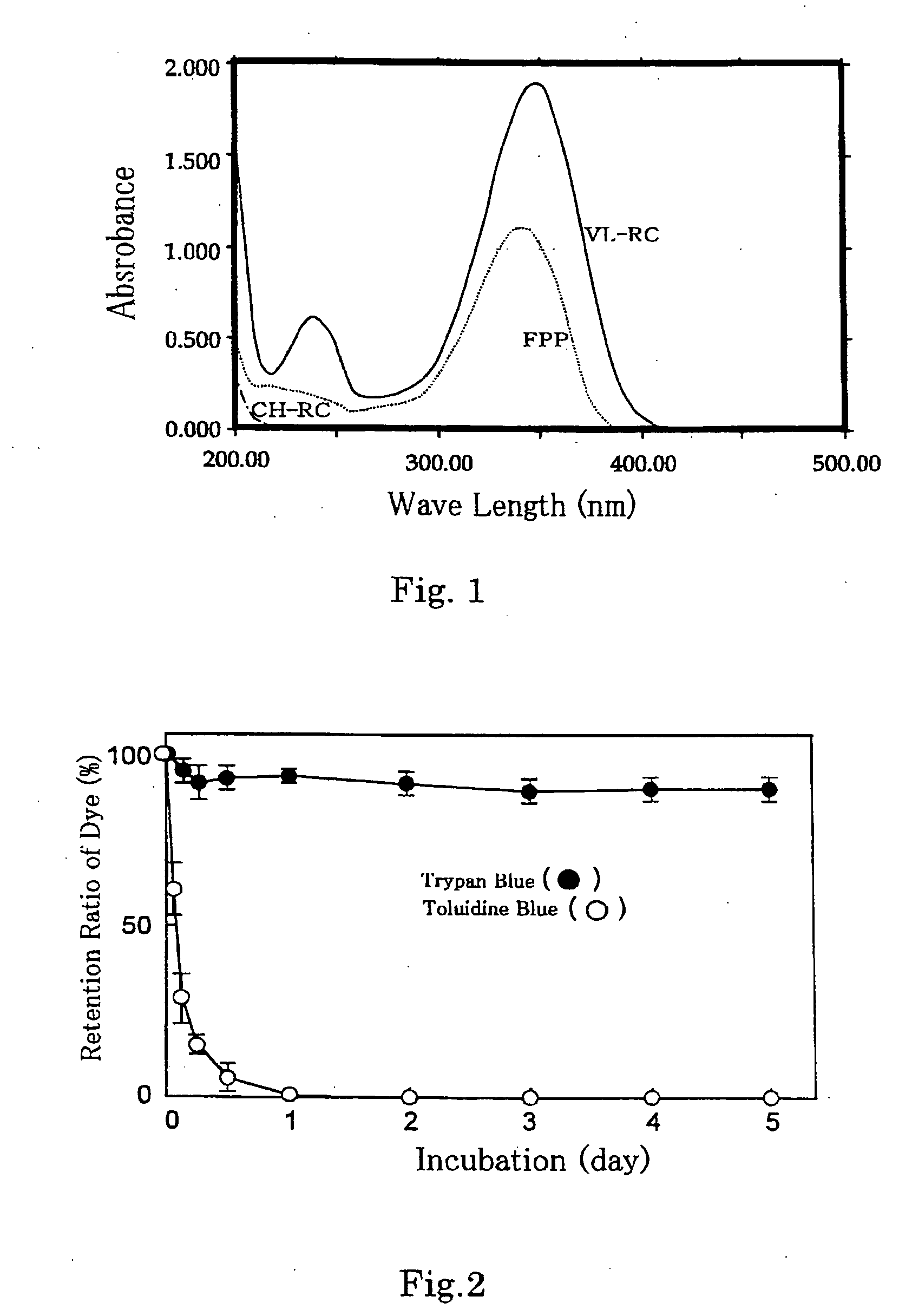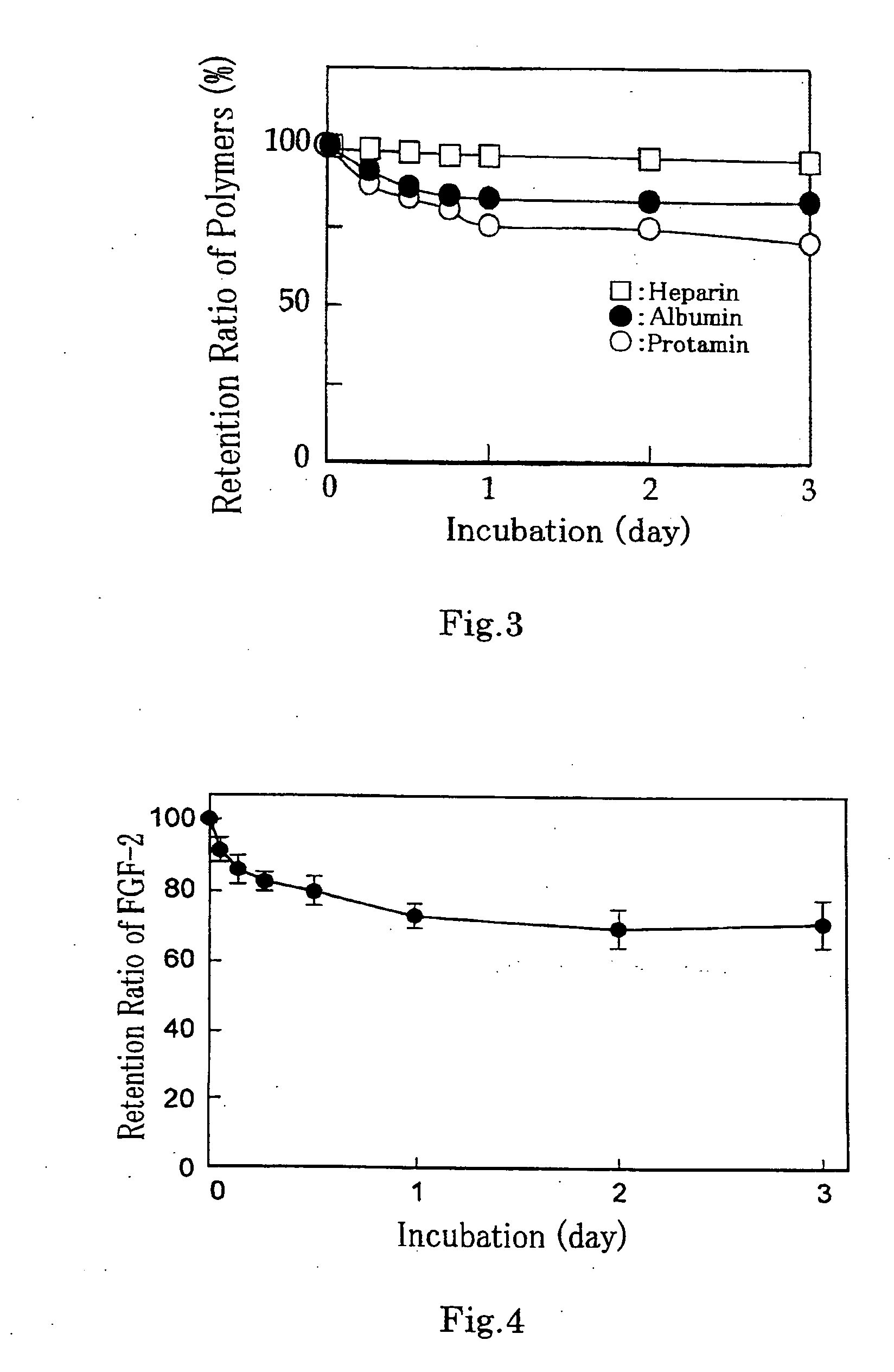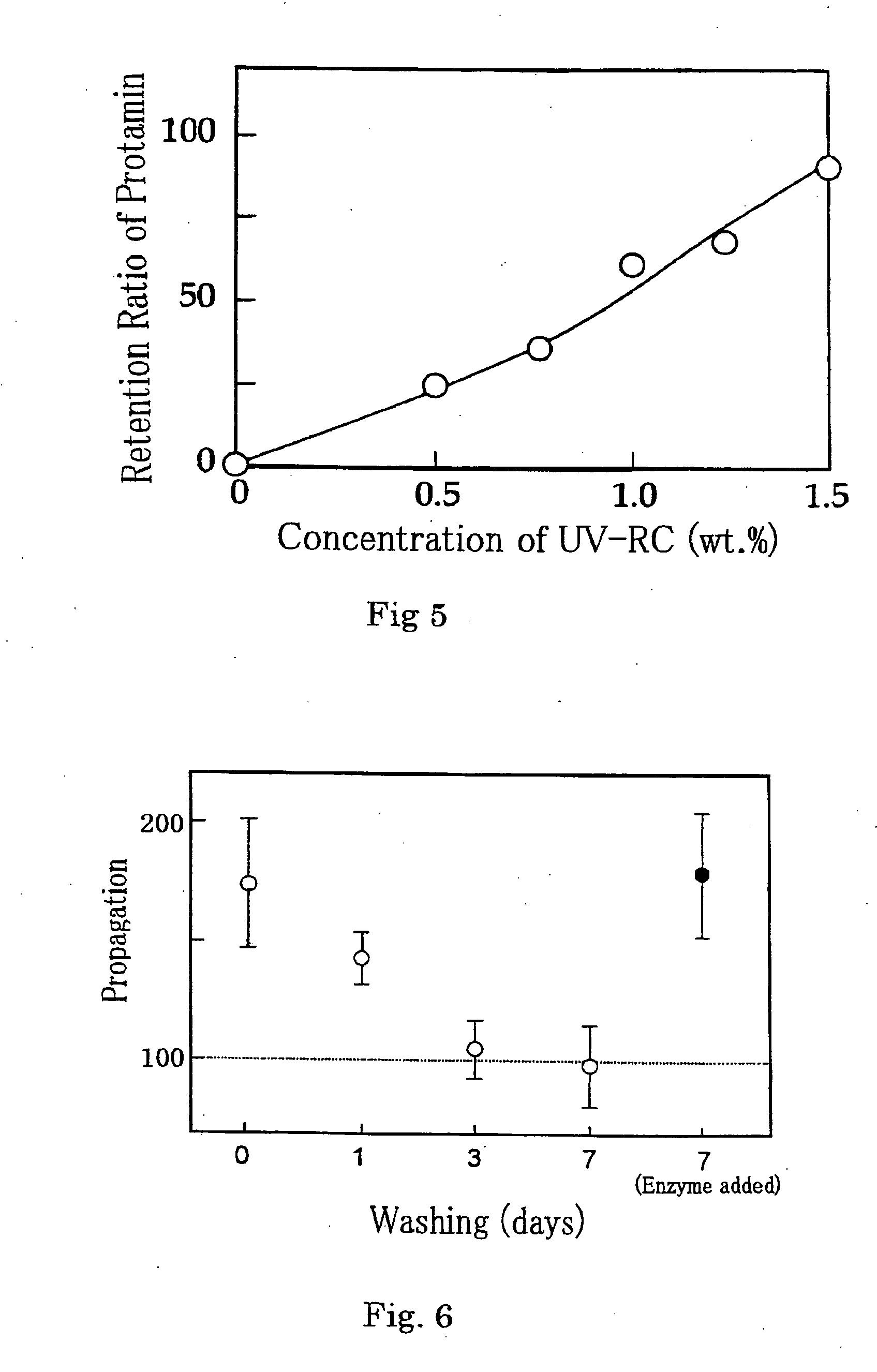Medical composition containing photocrosslinkable chitosan derivative
a technology of photocrosslinking chitosan and derivative, which is applied in the direction of drug compositions, peptide/protein ingredients, prosthesis, etc., can solve the problems of significant delay in the regeneration of defective tissues, concomitant severe exogenous infections, and insufficient protection functions of wound protection and defense, so as to promote tissue regeneration and promote the healing of intractable wounds. , free from the risk of side effects
- Summary
- Abstract
- Description
- Claims
- Application Information
AI Technical Summary
Benefits of technology
Problems solved by technology
Method used
Image
Examples
synthesis example 1
[0084] Synthesis of Photo (Ultraviolet) Crosslinking Chitosan Derivative (UV-RC)
[0085] UV-RC wherein an ultraviolet reactive group and a carbohydrate chain were introduced into a chitosan backbone structure was synthesized in accordance with the method described in WO00 / 27889. More specifically, azide (p-azide benzoate) and lactose (lactobionic acid) were introduced by condensation reaction into an amino group of crab-derived chitosan having 800 to 1,000 kDa of molecular weight and 80% of deacetylation degree (available from Yaizu Suisan Industry Co., Ltd.). It was confirmed that the resultant was soluble in neutral pH due to introduction of lactose, and substitution degrees of p-azide benzoate and lactobionic acid were about 2.5% and 2.0% respectively.
[0086] Further, when chitosan materials derived from shrimp shell and a chitosan material derived from cuttlefish cartilage were used, similar derivatives could be synthesized.
synthesis example 2
[0087] Synthesis of Photo (Visible Light) Crosslinking Chitosan Derivative (VL-RC)
[0088] Methyl-4-[2-(4-formylphenyl)ethenyl]pyridine methosulfonate (FPP) expressed by the following formula was synthesized in accordance with the method described in Journal of Polymer Science: Polymer Chemistry Edition, Vol. 20, 1419-1432 (1982).
[0089] More specifically, under the condition of cooling with ice, a solution of γ-picolline (3.07 g, 33 mmol) in methanol (8.3 ml) was added to dimethyl sulfate (4.16 g, 33 mmol). After the solution was left for 1 hour at room temperatures, terephthalic aldehyde (13.4 g, 100 mmol) was added to the solution and dissolved therein by heating. Subsequently, piperidine (0.47 ml) was added, and refluxed for 5 hours. A separated substance was removed by heating filtration. A hot filtrate was mixed with a mixed solvent of ethanol (50 ml) and acetone (16.7 ml), which was left overnight at room temperature. A yellow separated substance was batched off by filtration...
example 1
[0093] 2% water solutions of UV-RC and VL-RC obtained in the foregoing Synthesis Examples 1 and 2 were prepared. The respective aqueous solutions were irradiated with light having various wavelengths by an irradiation device made by Ushio, Inc., and a strength test of adhesiveness of the crosslinked chitosan matrix was conducted by the procedure described in Example 4 of WO00 / 27889.
[0094] More specifically, 2 slices of edible ham being 2 mm thick cut in a size of 2×3 cm were arranged to obtain a size of 2×6 cm. The foregoing respective solutions were applied thereto so that an application size became 2×2 cm and 2 mm thick with a central focus on the interface between the two slices of ham.
[0095] Immediately after that, the applied solutions were illuminated with light for 30 sec to bond the two slices of ham. One of the bonded two slices of ham was fixed to a stand by a clip, an end of the other slice of ham was progressively weighted, and the weight was measured at which the bond...
PUM
| Property | Measurement | Unit |
|---|---|---|
| Fraction | aaaaa | aaaaa |
| Fraction | aaaaa | aaaaa |
| Density | aaaaa | aaaaa |
Abstract
Description
Claims
Application Information
 Login to View More
Login to View More - R&D
- Intellectual Property
- Life Sciences
- Materials
- Tech Scout
- Unparalleled Data Quality
- Higher Quality Content
- 60% Fewer Hallucinations
Browse by: Latest US Patents, China's latest patents, Technical Efficacy Thesaurus, Application Domain, Technology Topic, Popular Technical Reports.
© 2025 PatSnap. All rights reserved.Legal|Privacy policy|Modern Slavery Act Transparency Statement|Sitemap|About US| Contact US: help@patsnap.com



